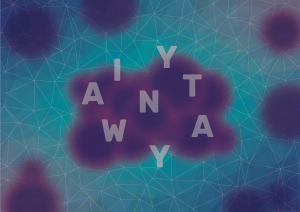About this project
If You Are Not There, Where Are You? is trying to find a language for the multisensory experience of absence epilepsy, or: a brief moment of ‘not being there’. And if you are not there, where are you?
Through art and science, If You Are Not There, Where Are You? breaks the silence that surrounds absence epilepsy in children and youngsters. Simultaneously, we aim to contribute to the wider discourse about the relationship between reality and imagination.
Children with absence epilepsy are ‘gone’ for a few seconds, sometimes several hundred times a day. If You Are Not There, Where Are You? gives shape to the worlds where the children and youngsters are during those times.

Every young person who has experienced absences is linked with his or her own artist. Together, in co creation, they give shape or sound to their personal absence experience. We call this: Mapping the experience. This website documents the art works and the process of creating them. The website is developing continuously and will grow. We hope this will be the beginning of an international image library of absence epilepsy.
“We are giving shape to a reality, using our imagination.”
WHAT ARE ABSENCES?
When a child experiences an absence, it will be gone for a few seconds and has a staring, blank look in its eyes. There may be a few noticeable automatic movements in the face or hands. Often people think the child is dreamy. Most children are between 3 and 12 years old when they start experiencing absences. For 70% of the children, the epilepsy disappears ‘on its own’ before they reach the age of 24. Nobody understands why.
Because a child is gone momentarily during an absence, it may miss out on pieces of information. This can be especially tricky during learning, but also while swimming, taking driving lessons or during a sleepover.
Classical science assumes that there is no experience during an absence. You’re simply gone for a moment. There is no consciousness, nothing. If You Are Not There, Where Are You? researches the ‘nothing’ during that moment.
Absences can be quite frightening, disorienting, exhausting, neutral but also pleasant. Children sometimes provoke them on purpose. They can experience reality in a completely different way before, during or after a fit. The absences create an involuntary montage of reality. There are holes.
“You think you’re insane. All dimensions change, from very large to very small, the sense of self disappears, dimensions flip or turn inside out, nothing makes sense anymore.”
GOAL OF THE PROJECT If You Are Not There, Where Are You?
Epilepsy is one of the longest known, but worst-understood diseases in existance. Especially children who suffer from this are prone to loneliness and fear. Because artists and scientist have worked together from the start of this project, new knowledge emerges.
Through this project, absence experiences become shareable. We call the method we use to share the experiences ‘mapping the experience’.
By mapping absence experiences, we contribute to knowledge about epilepsy. Not by telling, but by showing the experiences in images and sounds.
This leads to a newfound curiosity about absences. For people who suffer from them and their nearest and dearest, but also new scientific questions emerge, due to the artistic approach of this research.
We are inspired by absences, because being ‘gone’ briefly is a general human experience. In our lives, absent things matter just as much as the things that are present.
THE ORIGIN OF If You Are Not There, Where Are You?
Maartje Nevejan, director and initiator of this project, has had absences herself as a child, just like her son. She is familiar with the experiences in two ways: as an insider and as an outsider. When Nevejan looked online for books and images about absences, she noticed there was very little appealing material describing the disorder. Absence epilepsy is not a rare disease (one in every two hundred children suffer from it), but it is an enigmatic occurrence, which appeals to the imagination.
Nevejan:
“I wanted to do a project about absences and their influence on a life, as well as their frightening and wonderful aspects. My son and I have both outgrown the disorder, but still we regularly discuss our absences and experiences. We can’t see certain scenes in book and films, or certain natural phenomena, or works of art, without remembering that they used to evoke an absence. We will research the experience of absences at the crossroads between art and science, to give words and images to the unexplainable.”
Many famous artists and scientists had absences and/or epilepsy: Lil’ Wayne, Michelangelo, Lewis Caroll, Dostejevsky, Vincent van Gogh, De Chirico, Prince, Neil Young, Susan Boyle, Isaac Newton, Alfred Nobel, Aristoteles, Mohammed, Mozes, Pythagoras, Berlioz, Schumann…